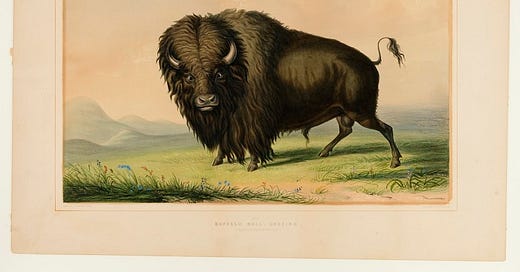If people think of rewilding, they think of it as a European idea, describing wildlands projects in Scotland, Romania, or the Netherlands, but the concept started in the United States. David Foreman, co-founder of the environmental group Earth First! and founder of Rewilding Earth is credited with coining the term in the 1990s. The Wildlands Project, now called the Wildlands Network, was launched in 1991 to create a huge network of wildlands across North America.
Although environmental consciousness was greater back then, rewilding took its time catching on in the public’s consciousness. I didn’t find a major newspaper publishing a story on rewinding until 2014.1 And still rewilding doesn’t get a lot of press and is something most folks are unfamiliar with, so I thought I’d devote this post to the topic.
Modern conservation efforts often rely on methods requiring human input to maintain a species or an ecosystem, such as captive breeding programs. Efforts to save the California condor are a good example of this. In contrast, the essence of rewilding is to restore a natural system so that it is self-regulating. Put the plants and animals in a large enough area and let nature take its course. Rewilding relies on three concepts:
Core reserves: providing large areas with bountiful habitat
Corridors: creating natural or semi-natural tracts of land between the reserves to enable movement of wildlife among the reserves
Carnivores: incorporating predators like wolves and mountain lions to naturally cull populations of herbivores
Even at the beginnings of the rewilding movement, some went so far as to suggest Pleistocene rewilding. These folks contend that North America (and other parts of the world) is ecologically off balance due to the Pleistocene megafauna extinctions from around 13,000 years ago, when species of large oxen, camels, and other big animals disappeared from the landscape. To correct this imbalance, the Pleistocene rewilders recommend introducing analogous species, such as the African cheetah, elephant, and camel to roam tracts of North America. In this way rewilding differs from conservation efforts that formed in the late 19th and early 20th centuries, with their emphasis on the retention of endemic wildlife and ecosystem structures.
Keep reading with a 7-day free trial
Subscribe to The Green Dispatch to keep reading this post and get 7 days of free access to the full post archives.



